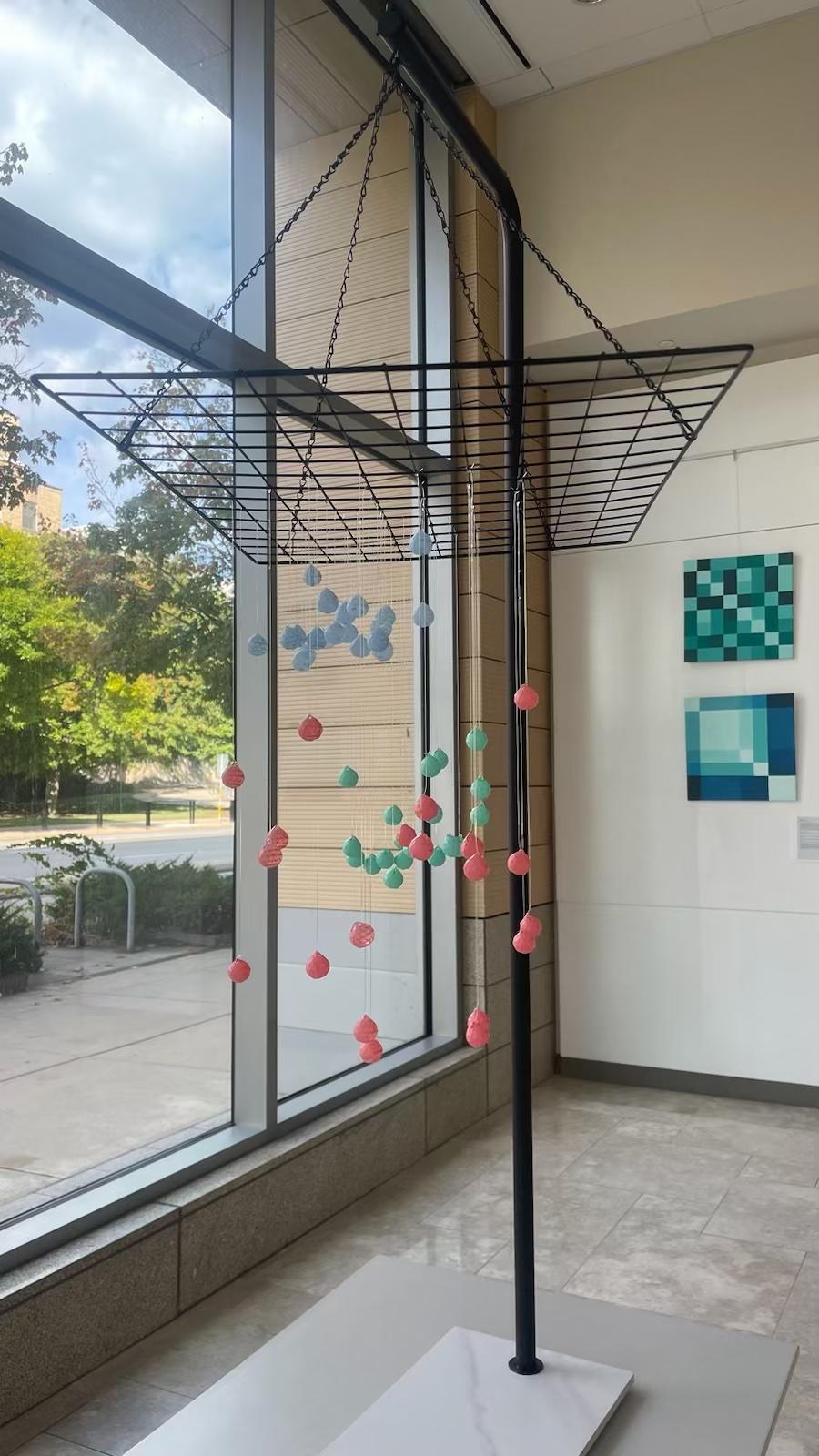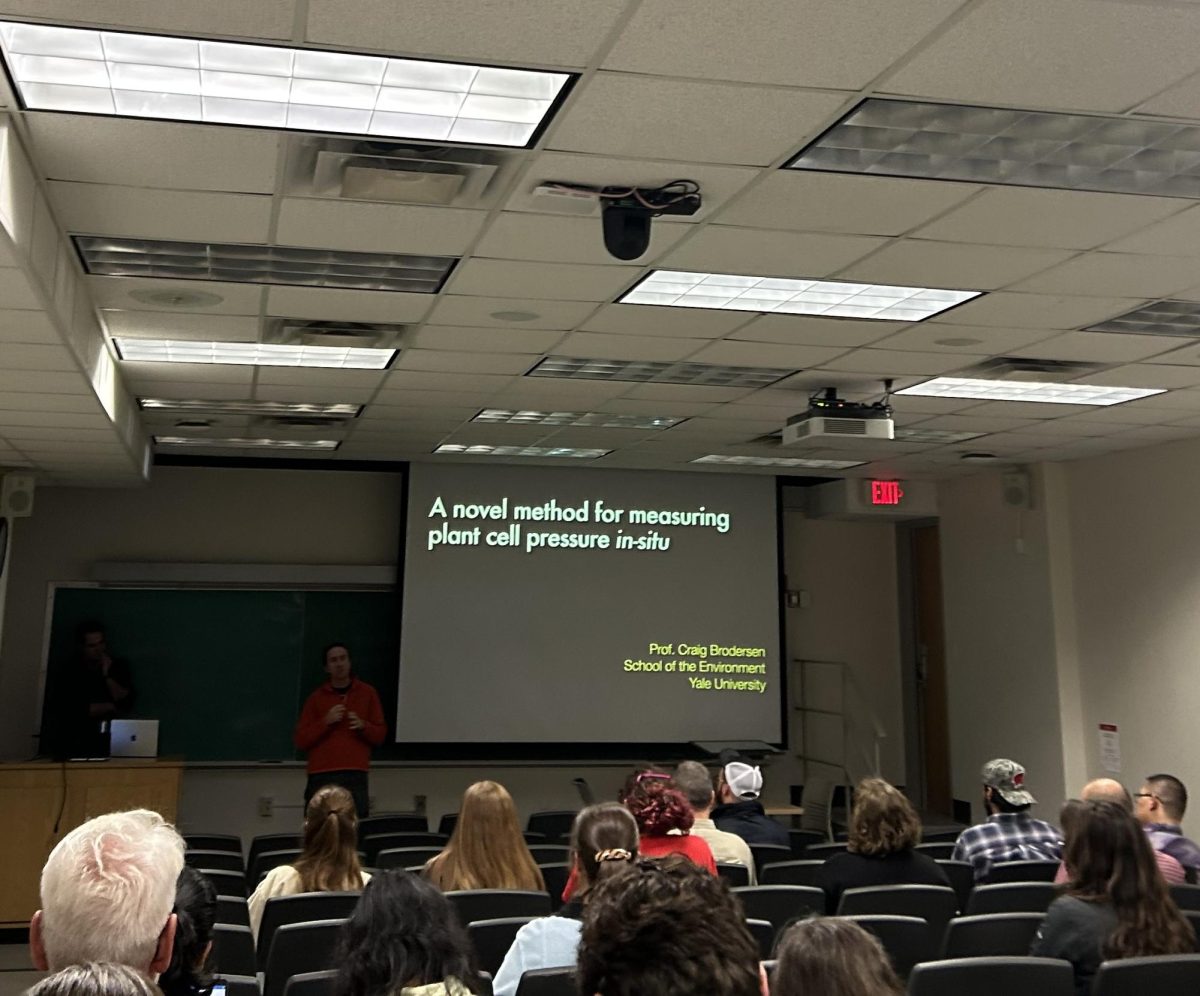The Illuminating Discovery Hub at the Wisconsin Institute of Discovery collaborated with plant pathology assistant professor Claudia Solis-Lemus and statistics assistant professor Kris Sankaran to curate the “Technical to Beautiful: Data as Art” exhibit.
The five displays at the gallery aim to visually inspire scientific and technological education and careers through artwork and design. Each piece follows the theme of the exhibit — “perception of data from an artistic lens.”
In an email statement to The Badger Herald, Solis-Lemus said it’s important to nurture curiosity and play, especially during a time focused on utility and production.
“Data projects can give you an excuse to learn more deeply about something that you’ve always wanted to learn about,” Solis-Lemus said. “So much of the rhetoric around data can be so self-important, an exhibition seemed like an opportunity to be intellectually playful.”
Wisconsin Dragonfly Society relays importance of dragonfly species through citizen science
The exhibit begins with the “Faces of Dimensionality: The Eigenfaces” artwork, which is a representation of computational art. It encourages viewers to think beyond the physical world into the statistical world that transforms the complexities of human faces into art.
The display at the center of the hall talks about how “perspective” is a very important detail to consider when it comes to dimensional data. It connects the biological world of an Iris flower to data science and challenges the brain to interpret it the right way.
“… Being able to see the data points in real life made the dataset come to life,” Sankaran said in an email statement to The Badger Herald.
The color maps at the end of the room aim to study the importance of “visualization” in inferring data. Solis-Lemus said this piece demonstrates the power of humans to use data to understand their personal nature and tendencies.
Lastly, the “Grassmannian Manifold” display explores a two-dimensional existence.
Through these art displays, the exhibition sets data scientists apart from their typical portrayal of being “purely rational” and “only interested in things that can be quantified,” Sankaran said.
Advanced statistical model found to better predict El Niño, UW research says
“The reality is that data scientists are often most interested in ambiguity and uncertainty. Similarly, artists are sometimes dismissed as living ‘in their own world’ when they have the sharpest eyes for patterns (social and natural) that many of us can vaguely sense but not precisely articulate,” Sankaran said.
This exhibit highlights the interdisciplinary nature of the data, which is derived from a combination of science, art and mathematics. Solis-Lemus said it represents an analytical and creative community that does not draw artificial boundaries around itself. The expression and application of creative skills and scientific knowledge helps support success in this field.
Director of IDH, Andrew Hanus said in an email statement to The Badger Herald many scientists have an artistic side to them that they wish to explore, either through revealing their research or by simply handling a paintbrush. The IDH draws on the strengths of artists and scientists who explore their creativity at this intersection.
The exhibit is on display from Sept. 18 to Oct. 3 in the Image Lab at WID.














